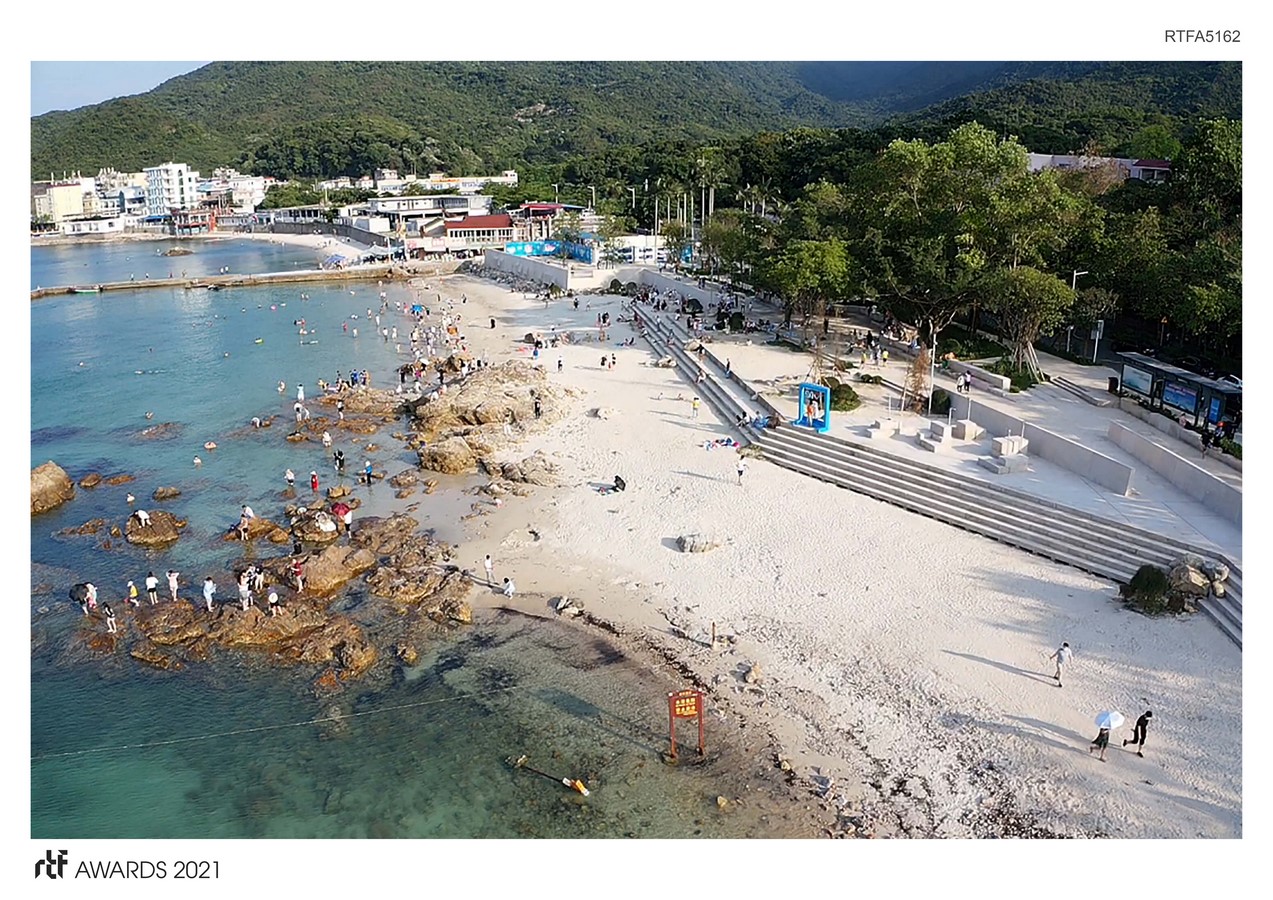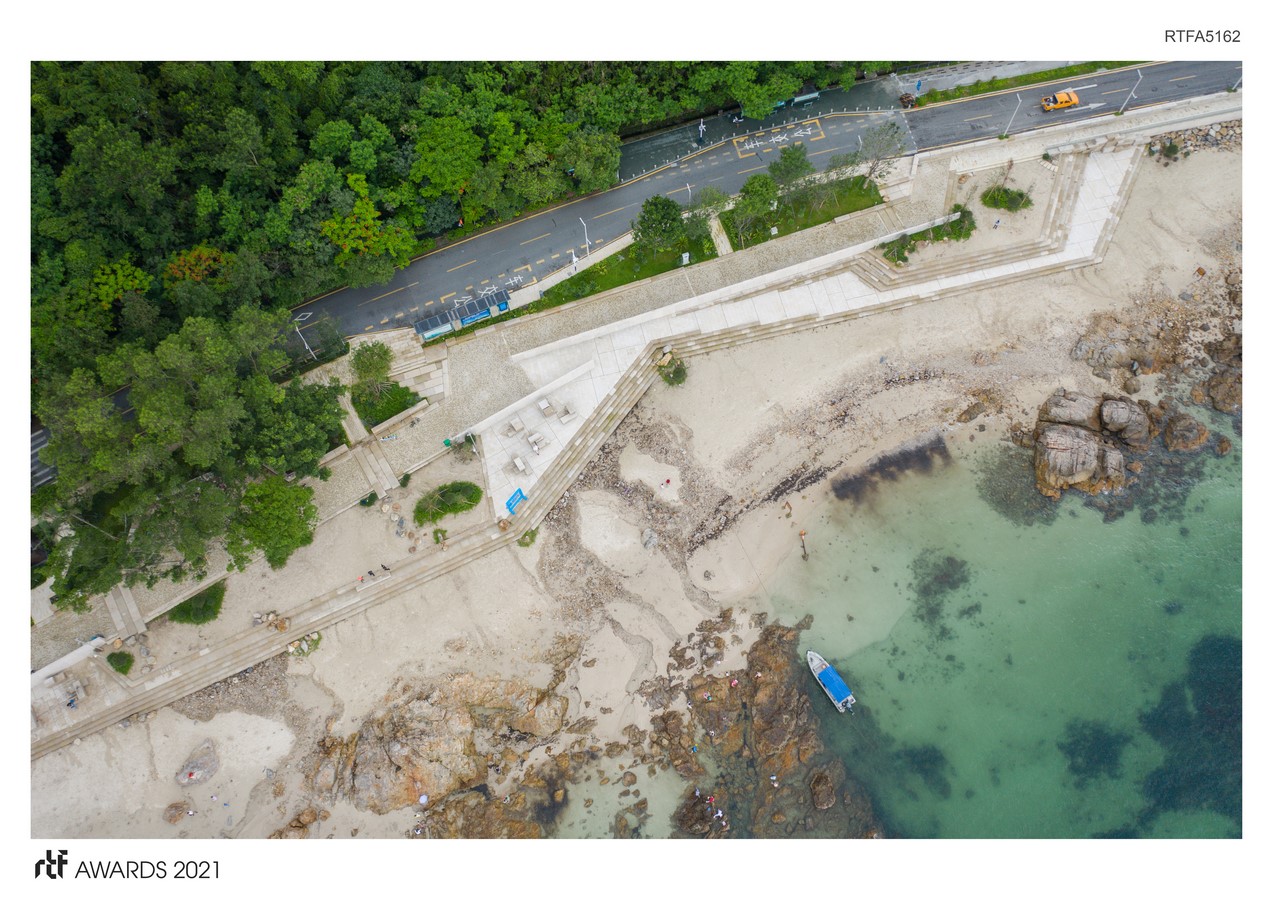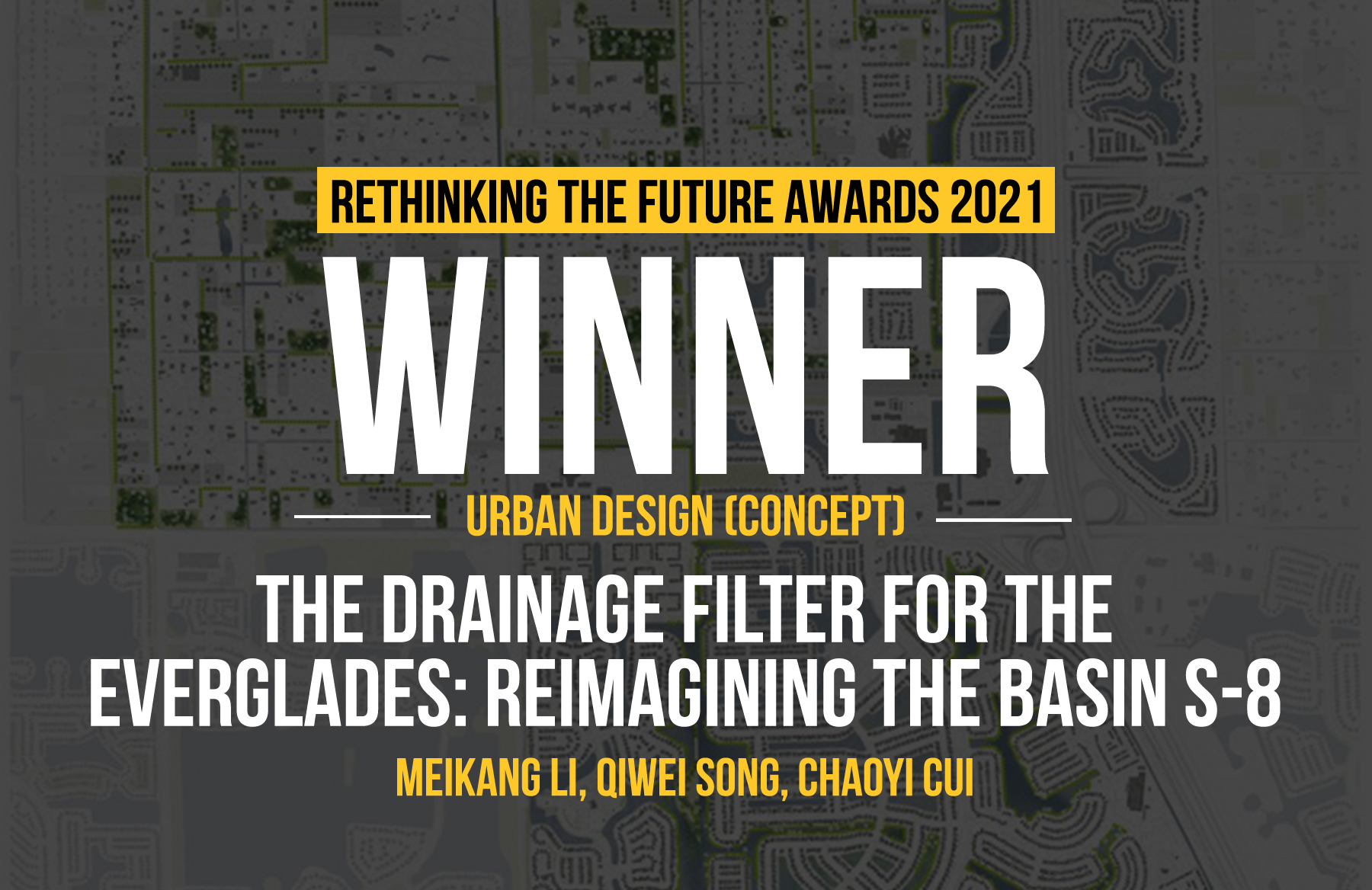Redevelopment of the Dapeng peninsula coastline
In 2018, typhoon Mangkhut damaged the coastline of the Dapeng peninsula to various degrees. In a competitionin 2019,calling for plans to restore the coastline and raise protection standards, the winning concept of the ‘Triple dike strategy’, as an integrated approach towards the climate adaptive reorganization of the 130 kilometer long shore was developed.
Rethinking The Future Awards 2021
Third Award | Public Landscape Project (Built)
Project Name: Typhoon-proof Shenzhen’s East Coast
Studio Name: KCAP + Felixx
Design Team: KCAP + Felixx (masterplan, landscape design and supervision)
KCAP + Felixx Landscape Architects & Planners
Area: masterplan for 130 km of coastline, detailed plan for 6 villages
Year: 2019-ongoing
Location: Shenzhen – China
Client: Water Bureau of the Municipality of Shenzhen
Consultants: China Resource Group (design and construction management), Hope Landscape & Architecture (landscape and construction design), China water transport planning & design institute (engineering), Deltares (research institute in the field of water and subsurface)
Photography Credits: ©drawings KCAP + Felixx
©photographs Xingzhong Zhang from China Resources group and Hao Cui from CCCC First Harbour Engineer, DUO Architectural Photography – Hongduo Zhuo
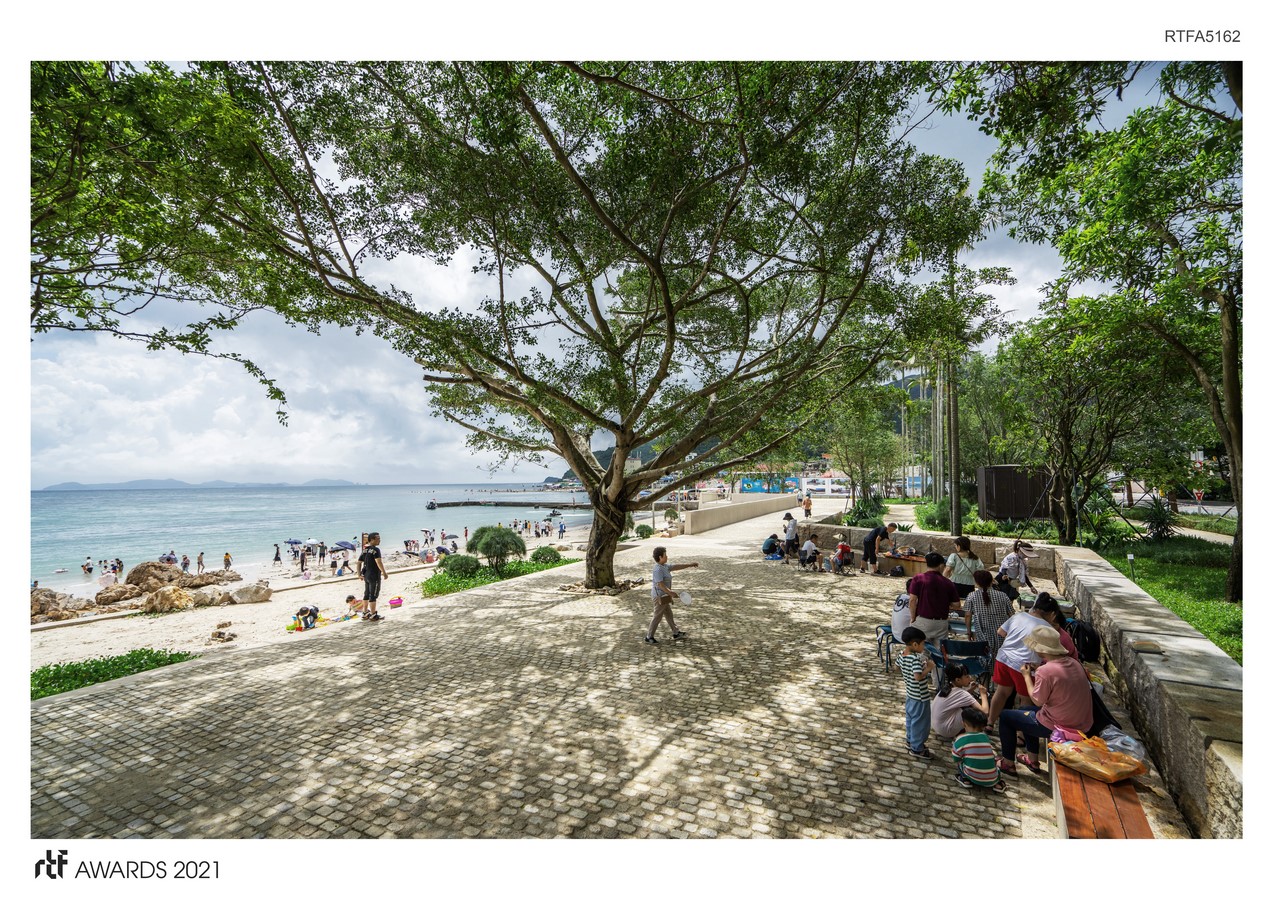
©photographs Xingzhong Zhang from China Resources group and Hao Cui from CCCC First Harbour Engineer, DUO Architectural Photography – Hongduo Zhuo
Water safety strategies are connected to eco-development and nature restoration, and merged with social and economic growth.
Triple Dike
The triple dike moves away from a generic protection wall along the coast, towards the creation of three development zones, carefully embedded in current conditions and responding to the specific future needs of every single area. The 1st ‘outer’ dike zone increases the resiliency through wave attenuation, erosion reduction and the enhancement of sedimentation. The 2nd ‘middle’ dike is an elevated embankment, to stop the storm surge and the water pushed up by the waves. It’s not a big wall but a multifunctional zone: an exciting hilly park, an elevated waterfront with urban promenades, a tidal park or even a public building. The 3rd ‘inner’ dike is a hybrid structure which manages the rainwater following the principle of a sponge city. All runoff from adjacent villages and mountains is buffered, delayed and temporarily stored in rain-parks, raingardens, wet forests, wetlands and green streets.
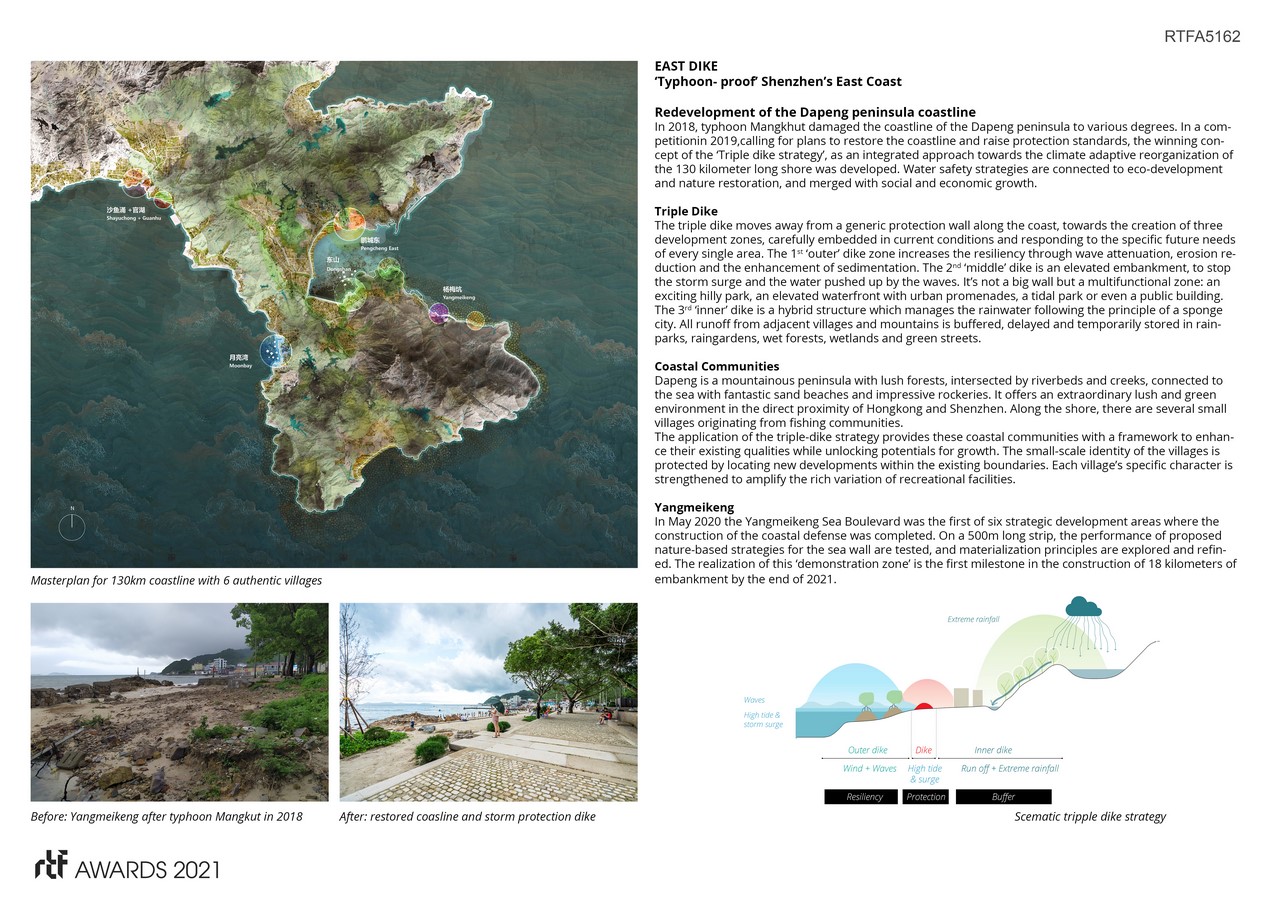
©photographs Xingzhong Zhang from China Resources group and Hao Cui from CCCC First Harbour Engineer, DUO Architectural Photography – Hongduo Zhuo
Coastal Communities
Dapeng is a mountainous peninsula with lush forests, intersected by riverbeds and creeks, connected to the sea with fantastic sand beaches and impressive rockeries. It offers an extraordinary lush and green environment in the direct proximity of Hongkong and Shenzhen. Along the shore, there are several small villages originating from fishing communities.
The application of the triple-dike strategy provides these coastal communities with a framework to enhance their existing qualities while unlocking potentials for growth. The small-scale identity of the villages is protected by locating new developments within the existing boundaries. Each village’s specific character is strengthened to amplify the rich variation of recreational facilities.
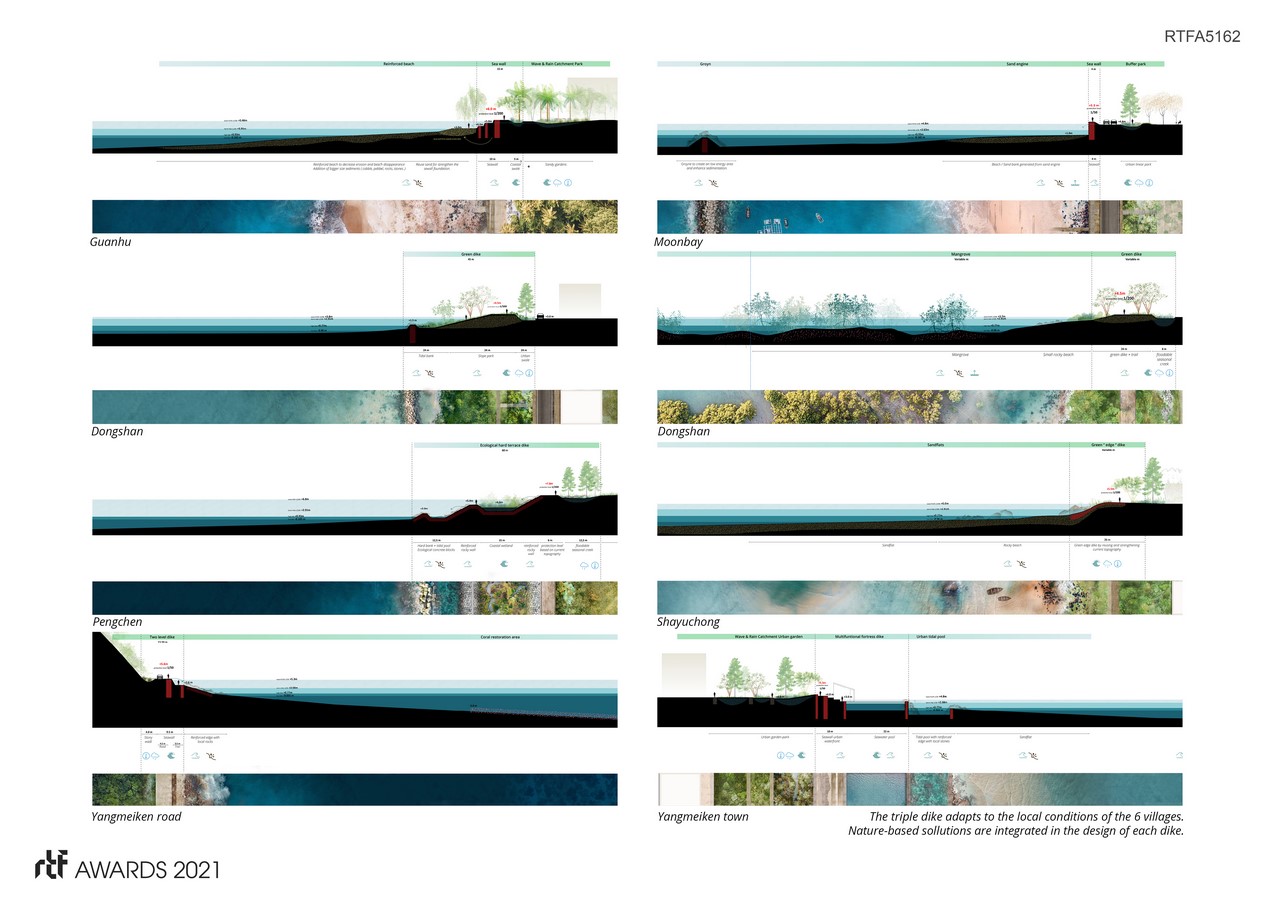
©photographs Xingzhong Zhang from China Resources group and Hao Cui from CCCC First Harbour Engineer, DUO Architectural Photography – Hongduo Zhuo
Yangmeikeng
In May 2020 the Yangmeikeng Sea Boulevard was the first of six strategic development areas where the construction of the coastal defense was completed. On a 500m long strip, the performance of proposed nature-based strategies for the sea wall are tested, and materialization principles are explored and refined. The realization of this ‘demonstration zone’ is the first milestone in the construction of 18 kilometers of embankment by the end of 2021.


